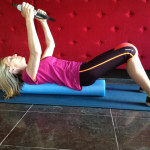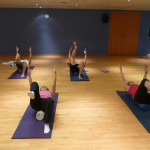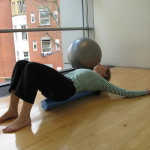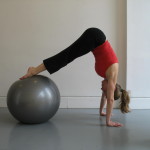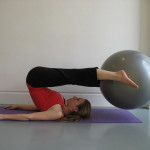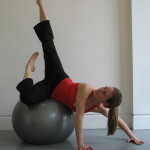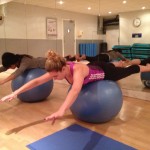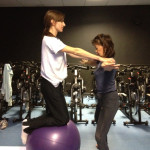- Roll down on foam roller, Image taken by Tiffany Pritchard at Bermondsey Square Hotel
- Roll down on foam roller, Image taken by Tiffany Pritchard at Bermondsey Square Hotel
- Roll down on foam roller, Image taken by Tiffany Pritchard at Bermondsey Square Hotel
- Foot balance lifts on foam roller at Top Notch Gym, Image taken by Tiffany Pritchard
- Thoracic stretch on foam roller (Tiffany Pritchard Pilates), Image taken by Meghan Horvath at The Place
- Cobra on foam roller (Tiffany Pritchard Pilates), Image taken by Meghan Horvath at The Place
The foam roller is just what the name suggests – typically 12 to 36 inches long and cylinder in shape – its foam-like textured surface aids in creating both a gentle support for the body as well as a myofascial release that improves soft tissue extensibility and helps relax the muscles. Physios, and now trainers and pilates instructors alike, use these for stretching and strengthening, and like the Swiss Ball, it is also beneficial with balance and core work.
While attending a physio session may be costly, these rollers can be found at most gyms or online anywhere from £15 to £25. Be warned: painful yelps are not uncommon when first getting used to their firm exterior. Your muscles will be thrilled however, likening it to a self-imposed intense massage. And if you can manage to balance on your back with one leg up as well – you’re body will be even happier. After all, targeting both deep tissue and core strength with one prop is no small feat!

